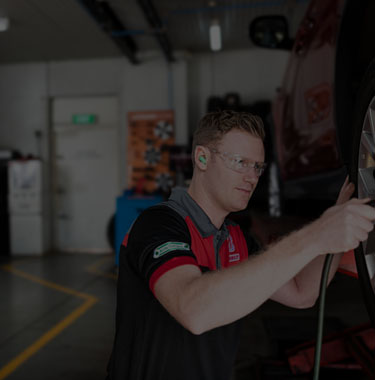Tyre Care and Car Tyre Maintenance
Top tyre care tips to maximise your tyre life and stay safe on the road
The right tyres can make driving your car a great experience. Looking after your tyres will not only improve their comfort and safety,
but will also help you make the most of your purchase by increasing their wear life.
In this article, we explain how to take care of tyres and share tyre maintenance tips to keep your tyres working at their best.
Car tyre maintenance tips
1) Check your tyres weekly
2) Rotate your tyres regularly
3) Ensure tyres are inflated correctly
4) Check age of your tyres
5) Get professional wheel alignment
6) Keep tyres balanced
7) Consider nitrogen tyre inflation
Check your tyres weekly
Inspecting your tyres weekly will help you spot problems as they arise, and can prevent damage to your tyres in the long run.
When checking your tyres, make sure they are properly inflated and have sufficient tread depth remaining. Tyres must be replaced if worn down to any of the tread wear indicators as shown in the image. You should also look for any damage or cracks in the tyre’s surface. If you’re not sure about the condition of your tyres, come into one of our Bridgestone stores and have them inspected by a professional.
Learn more about Tyre Tread Check
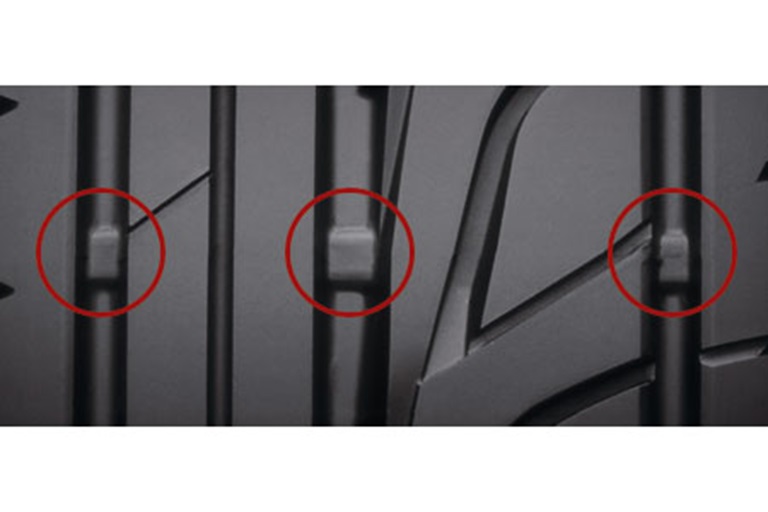
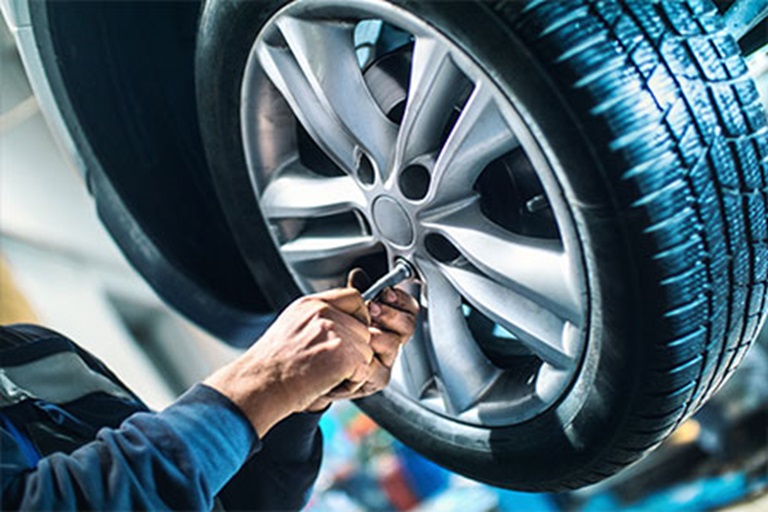
Rotate tyres
Rotate your tyres regularly
Rotating your tyres will help to make sure that they wear evenly and last longer. In general, you should rotate your tyres every 5,000 to 8,000km, even if there is no sign of uneven wear. However, it’s worth noting that different vehicles will wear their front and back tyres at different rates. Front wheel drives wear tyres differently from rear-wheel drives, and station wagons and utes also have different wear patterns. If you’re not sure when to rotate your tyres, ask one of our friendly mechanics.
Tyres inflated
Ensure your tyres are inflated correctly
Under or over inflation of your tyres can lead to excessive wear, and can make it harder to handle your car on the road. To preserve your tyre’s wear life, inflate your tyres to the manufacturer’s recommended tyre pressure. You can find this information on the driver’s side door frame, inside the fuel door, in the glove box, or in your car’s manual.
Learn how to check your tyre pressure & inflate your tyres.
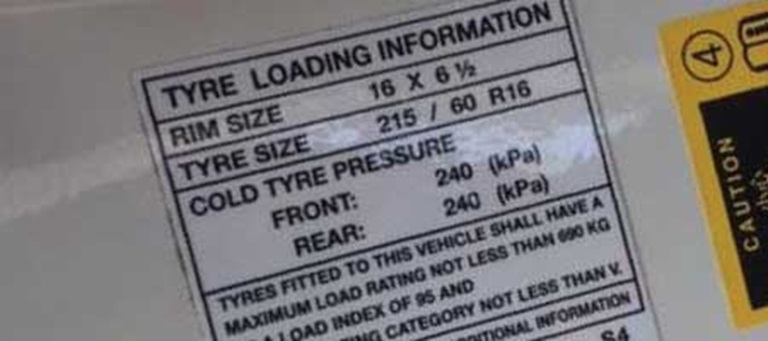

Tyre Age
Check tyre age
Driving on tyres that are too old can be a serious safety risk. As the rubber in a tyre ages and is exposed to the elements, the strength of the bond between the rubber and the steel belts is reduced. This can lead to cracks in the tyre’s structure when it is placed under load. Eventually, these cracks can even cause the steel belts in the tread to separate from the rest of the tyre.
For this reason, tyres older than ten years should be replaced, regardless of appearance, mileage, or actual wear. To check the age of your tyres, look at the Serial Tyre Identification Number (TIN).
If you’re unsure how to check your tyres age at your nearest Bridgestone store.
Learn more about how to check your tyres age.Wheel alignment
Get a professional wheel alignment regularly
Misaligned wheels can cause your tyres to wear excessively and irregularly. They can also impact your car’s handling and braking on the road. To improve your tyre’s wear life and stay safe on the road, it’s important to have your wheels professionally aligned after 10,000km of driving or every six months. You may also need a wheel alignment if you feel as though your car is pulling to one side of the road.
We can professionally align your tyres at your local Bridgestone store. Our friendly tyre technicians will adjust your wheels using the latest alignment technology, to make sure your tyres steer true, and undergo the least amount of wear.

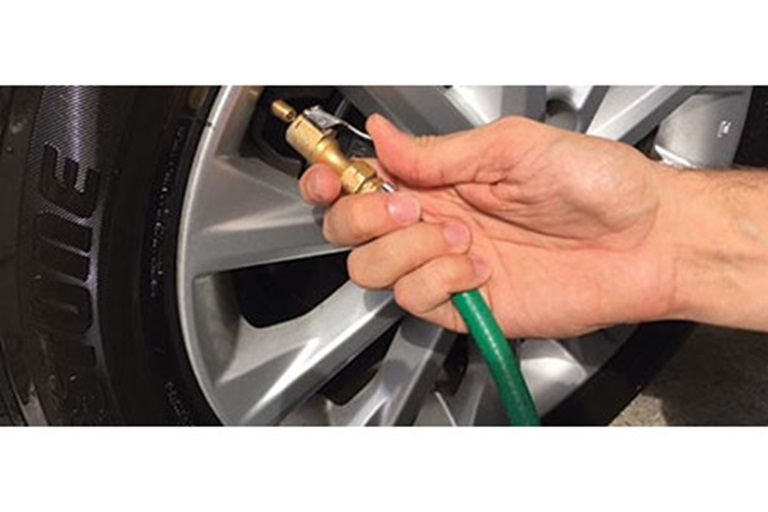
Tyre balance
Keep your tyres in balance
If you notice a steering wheel wobble or vibration when driving at high speeds, your tyres may be out of balance. Out of balance tyres can create irregular wear, unnecessary loading on steering components, and may even be dangerous on the road.
Tyre balancing involves attaching small weights to the wheel to counterbalance the heaviest part of the tyre and wheel assembly. Vibrations are often caused by these weights becoming loose, or being incorrectly placed. The tyre technician at your local Bridgestone store can easily fix these problems using specialist wheel balancing equipment.
Nitrogen tyre inflation
Keeping your tyres properly inflated is a crucial component of tyre maintenance. As Nitrogen molecules are larger than oxygen, naturally occurring pressure loss is reduced and ideal tyre pressure is maintained for longer. This can also deliver benefits for everyday driving such as better tyre life, and better fuel economy. Nitrogen is often used in motorsport due to its ability to maintain consistent tyre pressure throughout a race.
Talk to your local Bridgestone store to find out whether nitrogen inflation can help improve the performance of your tyres.
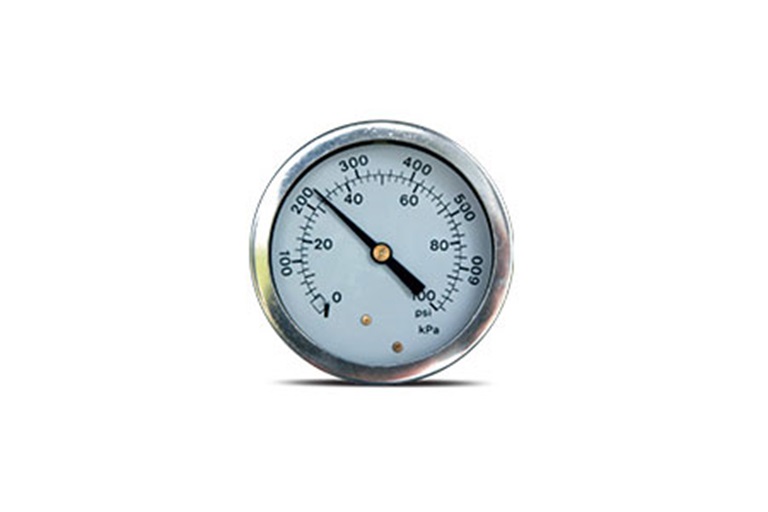
Tyre Glossary
All you need to know about tyres and more.
The geometry of your vehicle’s suspension, which determines each tyre’s contact patch with the road.
It primarily consists of three elements – caster, camber and toe.
Air Pressure
The pressure of the air inside a tyre. Tyre pressure is usually measured in psi but can also be referenced in kPa.
Aspect Ratio
Section height divided by section width, expressed as a percentage. The higher the figure, the higher the tyre’s section height.
Camber
When viewing your vehicle from the front, camber describes the inward or outward tilt of your tyres. Camber adjustment maximizes the tyre-to-road contact, and takes into account the changes of force when a vehicle is turning.
Cold Inflation Pressure
The pressure of a tyre before the vehicle is driven and the tyre is warmed up.
The lining inside a tyre that prevents air leaking.
Load Index
The maximum load a tyre can carry at the speed indicated by its speed symbol, under specified service conditions. This is expressed as a numerical code.
Speed Symbol
The maximum speed at which the tyre can carry a load under specified service conditions.
PSI
Stands for ‘Pounds per square inch’ and is a standard measurement of pressure. It is the amount of force exerted over one square inch.
Rim
The component physically mounted to the vehicle that the tyre sits on. Often used interchangeably with wheel.
The frictional force resisting the rotation of a tyre. The lower the rolling resistance, the less fuel is required to move and maintain vehicle motion.
Run Flat Technology tyres
Tyres designed to run in a low or no-air situation for a limited distance and speed. This allows the driver to maintain control of the vehicle in case of a puncture, and drive to safety even when the tyre is completely deflated.
Sidewall
The part of a tyre between the edge of the wheel and tread.
Sipes
Small slots in a tyre’s tread.
Tyre Size
A set of numbers and letters that define a tyre’s specifications, such as section width, aspect ratio, speed rating, load rating and diameter of the wheel the tyre is made to fit on.
The part of the tyre that contacts the road.
Treadwear Indicator
A marker found in several places in the main tread grooves to indicate when the tread is fully worn.
Underinflation
A tyre that is not sufficiently inflated,. This can cause excessive wear, poor handling, and increased rolling resistance.
Wheel balancing
Balancing a wheel ensures that the wheel rotates smoothly without heavy points. This prevents vibration and uneven tyre wear.
Winter Tyres
Tyres utilising specific patterns and compounds specifically designed to be used on winter roads – ice, snow and water.
Let's find tyres to suit you
Frequently asked questions
-
What do the tread, traction and temperature ratings on my tyre mean?
Tread, traction and temperature ratings are known as the Universal Tire Quality Grading (UTQG) standard. They represent comparative ratings based on tyre performance when tested under controlled conditions on specific government test courses
Treadwear: The wear rate of a tyre. The higher the number, the better the treadwear compared to other tyres in the test. For example, the wear rate of the Bridgestone Potenza RE003 is 220.
Traction: The ability of a tyre to stop on wet payment. This rating carries a code of, "A," "B," or "C", with "A" signifying the highest traction efficient.
Temperature: A tyre’s resistance to heat generation. A tyre’s heat resistance is determined by its ability to dissipate heat. This rating carries a code of "A," "B," or "C," with "A" signifying the highest level of heat dissipation.
It is important to keep in mind that these ratings are determined by each manufacturer. While they are a great tool for comparing similar tyres from the same manufacturer, results when comparing tyres from different manufacturers may be inconsistent.
Real life tyre performance is also dependent on road conditions, the type of vehicle and how your vehicle is driven. These variables may not be accounted for in a controlled testing environment. -
How long will my tyres last?
You are legally required to replace your tyres when the tyre tread depth wears below 1.6mm. This will occur when your tyre wears level with the Tread-wear Indicators (TWI’s) positioned in the main tread grooves of your tyres. If your tread depth is below 3mm, you may also wish to replace your tyres to ensure better handling on the road.
If a tyre is older than 5 years from the date of manufacture it should be checked by a tyre professional each year for signs of age degradation. Tyres older than 10 years should be replaced regardless of wear. Your tyre dealer will be able to tell the age of a tyre from the serial number on the sidewall.
Find out more about changing tyres. -
How often should I change my tyres?
You are legally required to replace your tyres when the tyre tread depth wears below 1.6mm. This will occur when your tyre wears level with the Tread-wear Indicators (TWI’s) positioned in the main tread grooves of your tyres. If your tread depth is below 3mm, you may also wish to replace your tyres to ensure better handling on the road.
If a tyre is older than 5 years from the date of manufacture it should be checked by a tyre professional each year for signs of age degradation. Tyres older than 10 years should be replaced regardless of wear. Your tyre dealer will be able to tell the age of a tyre from the serial number on the sidewall.
Find out more about changing tyres. -
How can I extend the wear life of my tyres?
Maintaining your tyres and vehicle properly will allow you to maximise the wear life of your tyres. This means regularly checking and correcting your tyre pressure and wheel alignment, and rotating your tyres as required. Find out more about caring for your tyres.
